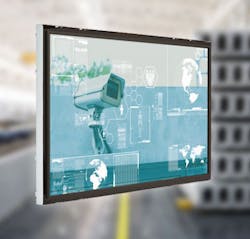Science fiction is fast becoming science fact. Artificial intelligence is now a business tool, robots are helping manufacturers increase productivity, and, for many, “Alexa” is part of the family. But for now, these technologies still need human input and, more than ever, we’re relying on the effectiveness of the human machine interface (HMI) to control them.
Today, touchscreen gadgetry is everyday reality. Driven by growing interconnectivity and the B2B community’s need for operational efficiencies, it’s moving from the mobile and consumer sectors into a wide range of industrial applications. This transition has seen a significant increase in the predominance of the HMI; a trend backed by the latest forecasts into the global HMI market. These predict an annual growth rate of just over 8.8%, taking its total worth from $3.43 billion in 2016 to reach a value of $5.7 billion by 2022.1
Simply speaking, a HMI is the way in which operators interact with a device or machine. It generally involves the integration of three key elements—a user interface, hardware, and software—that provides a window into the capabilities, status, and functionality of the product. The most visible aspect is the user interface itself, which now features high-resolution color graphical displays with the latest interactive touchscreen technology rather than pushbuttons and switches.
Today, the modern HMI must satisfy a multitude of needs. Operators need an intelligent, intuitive, and familiar user experience. Manufacturers are demanding more real-time data and diagnostics to minimize downtime and maximize production, while product suppliers are looking to offer solutions that are attractive, functional, and above all, saleable.
Given the technical complexity of bringing together the latest interactive displays, hardware, and software technologies, its importance should not be underestimated. It’s what the purchaser sees, what the operator uses, and what the manufacturers depend on to increase operational efficiencies.
Meeting Tougher Demands
Due to the diversity of these demands and the scope of functionality needed, it’s no wonder that engineers and developers are facing challenges in the race to present the best, market-leading solutions in the shortest possible timeframe. They must create solutions that will integrate across multiple platforms, use a range of software, and ensure that each component interacts seamlessly to deliver the perfect user experience, while optimizing output.
Such requirements can make or break the success of already tight timelines. And with so much at stake to gain competitive advantage in the marketplace, one mistake within the HMI can impair user experience and affect overall functionality.
Integrating displays with electronics and maintaining stable functionality isn’t easy. With so many disciplines involved, engineers must have knowledge and expertise of every aspect of hardware, software, and display technology.
As a result, it can take a considerable amount of time and resources to get up to speed with the latest proprietary technology and ensure all components of the HMI are just right. While outsourcing can help alleviate these pressures on developers, this too can create bottlenecks in the development lifecycle if the appropriate skills in the different aspects of HMI technology aren’t available under one roof.
Working with total solutions, providers with the right knowledge, expertise, development products, and tools can accelerate development. It will also free up time for software engineers who can then focus on developing the perfect application itself.
Full-service providers will also be able to offer customers a complete HMI solution containing stable BSPs (board support packages on Linux and Android) running on proven and scalable hardware, and then further enhance it with plug-and-play integration of various displays. The inclusion of a user-friendly development environment offering cross-compiling capability (like Qt) and all of the required tools is a significant element to success, enabling quick setup and development kickoff.
Such a concept presents engineers with a ready-made embedded ecosystem that offers the flexibility to select from, and deploy, a range of electronics, displays, and choice of software platform. In turn, they can more easily and quickly develop the HMI needed for their specific application.
Keeping up to speed by staying in-touch and ahead of the vast array of technologies needed to construct the perfect HMI will always be a challenge. However, what we do know with some certainty about the HMI of the future is that whatever we think is science fiction today, will undoubtedly be our reality tomorrow.
Rok Skutnik is Global Product Manager at Densitron.
Reference:
1. Global Human Machine Interface Market 2016 – 2022: Zion Market Research (August 2017).
About the Author
Rok Skutnik
Global Product Manager
Rok Skutnik heads up the embedded team at Densitron as Global Product Manager. Rok has many years of experience having successfully run his own embedded business.


